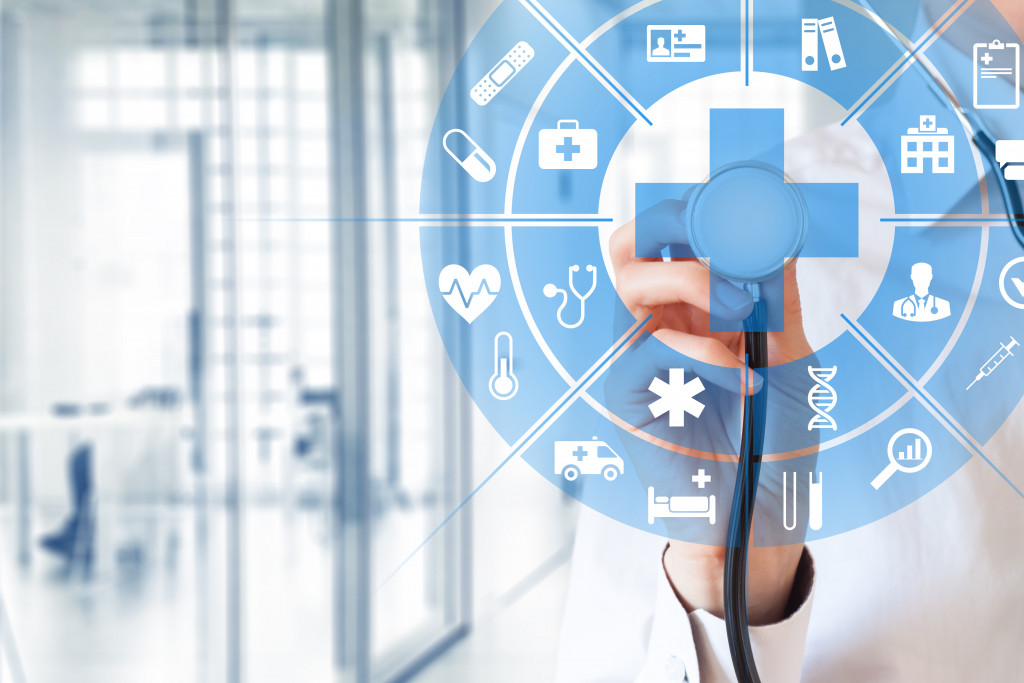Disclaimer: This website provides health information for educational purposes only and is not a substitute for professional medical advice, diagnosis, or treatment. Always seek the guidance of a qualified healthcare provider with any questions you may have.
In this day and age, data and analytics have become integral tools in the medical community. This technology allows healthcare providers to make more informed decisions based on data-driven insights. From diagnosing illnesses to predicting future health trends, data and analytics are transforming the medical space. Here’s a closer look at how these technologies are changing the way healthcare is delivered.
Enhanced Diagnostics
Data and analytics have revolutionized the diagnosis process. By combining traditional diagnostic methods with AI-based insights, doctors can now diagnose illnesses more quickly and accurately than ever before.
For example, AI-based systems can analyze a patient’s symptoms, generate possible diagnoses, and even suggest treatments that may be most effective for a particular case. This helps save time for doctors and patients alike by providing an efficient way to accurately assess a patient’s condition and provide appropriate treatment plans.
In addition, AI-based systems can help doctors identify and diagnose rare diseases that may have been overlooked in the past. By screening vast volumes of data from other patients, AI algorithms can detect patterns and present more accurate diagnoses for difficult-to-diagnose illnesses.
Improved Care Quality
By leveraging data-driven insights into patient care processes, healthcare providers are empowered to deliver higher-quality care at lower costs. Data analyses can help identify areas where improvement is needed, such as diagnostics accuracy or wait times for appointments.
Knowing where improvements need to be made helps healthcare providers prioritize their efforts so that they can better serve their patients while still staying within budget constraints. For instance, data analysis can help healthcare providers identify the most cost-effective treatments and develop care plans that best serve their patients’ needs.
Moreover, data and analytics can help healthcare providers identify high-risk patients and provide targeted interventions that reduce adverse events. By leveraging insights from past medical records, doctors can develop personalized care plans to ensure better outcomes for their patients.
Predictive Insights
Data analytics also allow medical professionals to gain predictive insights into future health trends in order to better prepare themselves for any potential issues that may arise in the near future. For example, many hospitals use predictive analytics to forecast demand.
They do this to determine how many beds they need or what supplies they should stock up on ahead of time to minimize disruptions in service delivery due to unexpected spikes in demand or shortages of critical items such as medication or equipment.
Additionally, predictive analytics can help healthcare providers identify factors that may trigger an outbreak of a particular disease, allowing them to take preventive measures before it becomes an issue. This helps medical professionals avoid potential public health crises and prepare accordingly to minimize the impact on their patients.

SaaS Usage
Data and analytics are also transforming the way healthcare providers use software-as-a-service (SaaS) solutions. By leveraging insights from SaaS data, healthcare providers can gain valuable insights into how their systems are performing, what areas need improvement, and which features should be prioritized in order to increase efficiency and reduce costs.
With this, many trusted SaaS analytics companies are starting to provide cloud-based solutions that allow healthcare providers to access these data and insights quickly and easily. These platforms enable doctors to store patient records securely online so they can be accessed from anywhere and help reduce the administrative burden of managing paper files.
More specifically, cloud-based analytics solutions enable healthcare providers to collect and analyze vast amounts of data from multiple sources, giving them valuable insights that can help improve patient care quality.
Increased Efficiency & Cost Savings
In addition to improving patient outcomes, data-driven insights also help increase overall efficiency within the healthcare sector, which leads to cost savings across the board, from reduced wait times for appointments to lower overhead costs associated with running a hospital or practice more efficiently.
This is due to improved inventory management and staff utilization rates thanks to predictive analytics capabilities that enable better forecasting of resource needs down the line. Additionally, leveraging big data technologies allows for streamlined administrative tasks such as billing; reducing paperwork processes which improves the accuracy of records management.
It also helps reduce manual errors associated with manual paperwork processes, which would otherwise cost organizations time and money when dealing with corrections later on down the road. The increased efficiency resulting from these insights helps organizations run smoother operations while keeping costs low—allowing them to focus their resources on what really matters: delivering quality care for their patients.
Data and analytics have become important tools within the medical community over the past few years, from providing enhanced diagnostics capabilities through AI systems all the way up through predictive analysis capabilities, which help forecast future health trends well ahead of time so that organizations can properly plan for any potential issues that may arise down the road. All in all, data-driven insights are invaluable when it comes to improving care quality while simultaneously increasing efficiency and cost savings —allowing organizations within this industry to focus their resources on delivering quality care without breaking budgets along the way! As technology continues advancing at an accelerated pace year after year, these capabilities will continue growing stronger—further improving the ability to give individuals around the world access to high-quality healthcare services regardless of location or financial status!

